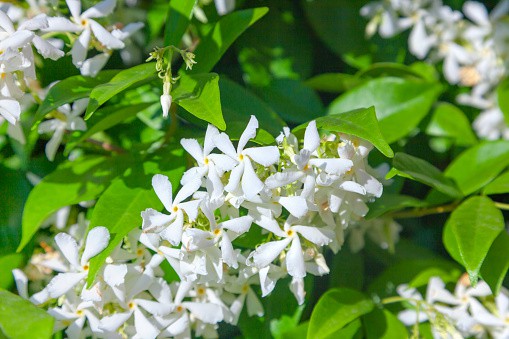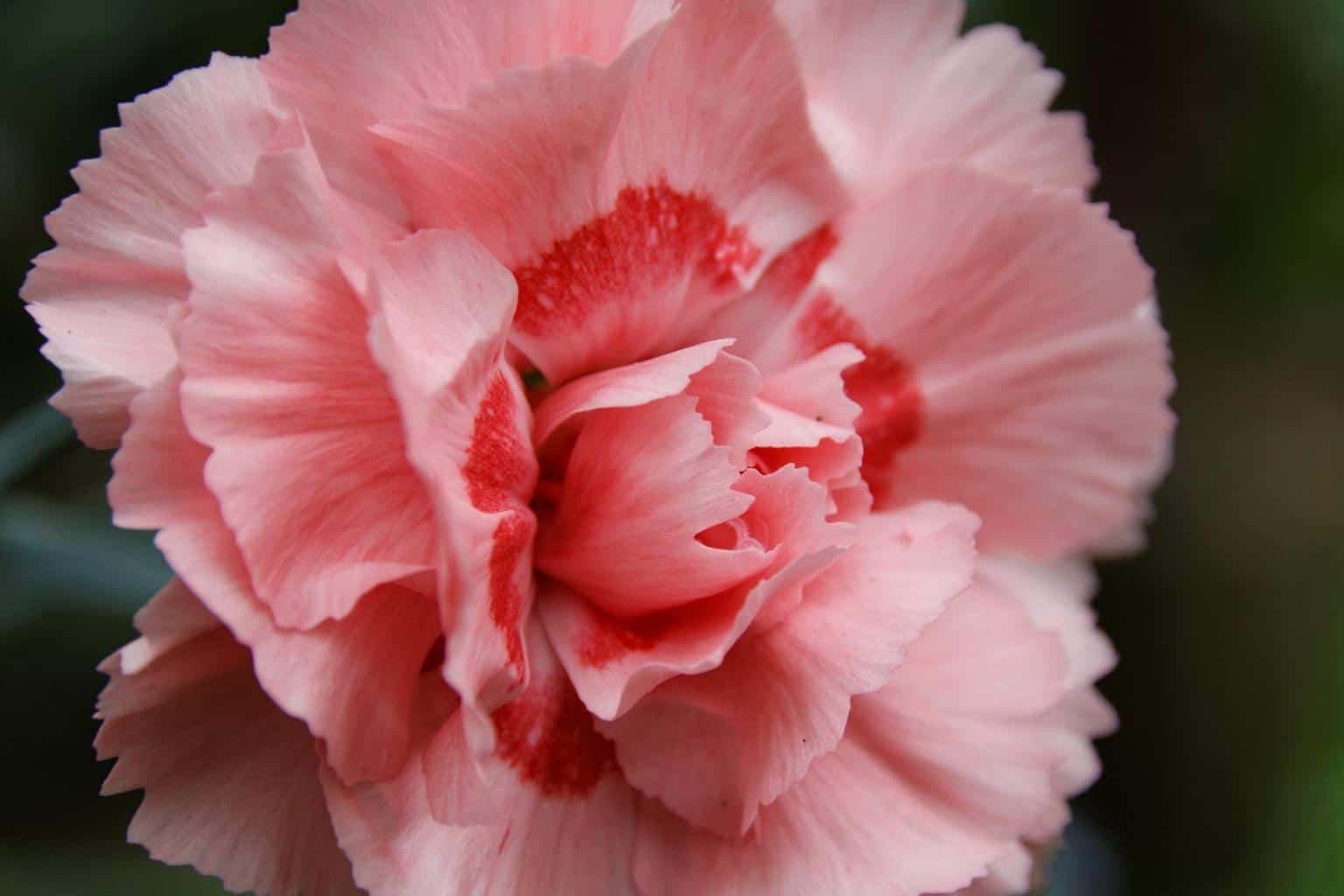Star Jasmine and Trachelospermum Jasminoides belong to the family Apocynaceae and are classified as evergreen climbing plants. When mature they can grow up to twenty feet high and be used as an option to cover fences, walls, or create sectional hedges with support. The foliage is glossy, dark green with oval shaped leaves, and it yields an abundance of small, star-shaped white or pale yellow flowers with a unique, sweet aroma. It is a very popular option for novice gardeners and adds a unique scent and texture to the garden.
Etymology
The scientific name for this plant is Trachelospermum jasminoides. It is derived from two Greek words: “trachelo” which refers to its long stem, and “spermo” which means seed. The second part of its name, “jasminoides” comes from the word “jasmin” which is derived from the Persian word “yasamin”, which means gift of god. The name then roughly translates to “stemmed seed like jasmine”.
Meaning and Symbolism
The Star Jasmine has a very sweet and symbolic scent. Beyond just the pleasing smell, it is a symbol of purity, grace, and warmth.
It is said to express a desire for love and peace and is often seen in buddhist temples and monasteries. The white petals of the jasmine flower, like the white dove or white lilies, have come to symbolize perfection and purity in many cultures and religions throughout the world.
History, Mythology, and Religious Significance
The Star Jasmine has been praised in many different cultures and religions throughout history.
In Christianity, the jasmine flower is known as a symbol of love and eternal life, and in Buddhism it is a symbol of compassion and generosity.
In Ancient Greece, it was very popular and was praised for its beauty and medicinal properties.
In traditional Chinese medicine, the jasmine flower was an ingredient for relaxation remedies. In Japan, the jasmine flower is seen as a symbol of modesty and the fragrant aroma is likened to the smell of fresh tea, which is associated with meditation and peace.
Flower varieties and their defining characteristics
- Trachelospermum Jasminoides has several subspecies and varieties, each with its own distinct features.
- Trachelospermum Jasminoides ‘Grandiflorum’, or Star Jasmine, is an evergreen shrub that yields an abundance of star-shaped white or pale yellow flowers on glossy dark green foliage. It can grow up to 20 feet tall and is relatively easy to care for.
- Trachelospermum Star of Toscana, or Variegated Star Jasmine, is a deciduous climber with deep green variegated foliage and cream colored flowers that have a light yellow center.
- Trachelospermum Asiaticum, or Chinese Star Jasmine, is an evergreen that yields larger star-shaped creamy-white flowers but with a golden center. The foliage is deep green and glossy.
How to Pot and Repot
The Star Jasmine must be provided with well-draining soil, as it is vulnerable to root rot. A mixture of potting soil, coarse sand, and perlite would make an ideal potting medium. A pot with drainage holes is also essential and it should be filled to the top with soil before planting. The plant should be situated in an area with partial shade, as it needs at least a few hours of direct sunlight in order to bloom.
When it comes to repotting, it must be done once a year. This should be done in spring or summer when the plant isn’t blooming and is actively growing. The plant should be taken out of its pot and the roots should be examined for signs of disease or damage. The roots should also be trimmed and pruned if necessary, and then the plant should be repotted in fresh soil.
How to Prune
Pruning is an important part of keeping your Star Jasmine in good health. If left unchecked, it can become overgrown and suffer from a lack of air circulation. To prune an established Star Jasmine, start by removing any dead, diseased or damaged leaves and blooms. Next, thin out any crowded branches and remove any that are growing in an awkward direction. Finally, trim back any errant branches and cut all stems one-third of the way to the ground.
How to Propagate
The Star Jasmine can be propagated either through stem cuttings or by layering. To propagate through stem cuttings, use a sharp knife to make a 45-degree cut just below a node, then remove the lower leaves, and dip the cut end in rooting hormone. Plant the cutting in a potting medium with one-third sand and two-thirds soil and keep in a warm and light location.
Layering is done by taking a low lying stem and bending it to the ground and burying it so that it is slightly covered in soil. The buried end will then form roots. Once the roots have formed, clip the stem and pot it into a new container.
Common Pests and Diseases
Like most plants, Star Jasmine can be affected by pests and diseases. The most common pests to affect the Star Jasmine are aphids, scale insects, and mealybugs. To prevent and control these pests, regular inspection of the foliage is essential, as well as the use of neem oil or other insecticidal soaps.
The most common disease affecting the Star Jasmine is root rot, caused by over-watering or poor drainage in the soil. To prevent root rot, make sure the soil is well draining, and only water when it is dry. If the plant is infected, it should be removed from the pot and the roots trimmed, then the plant should be repotted in fresh soil and the roots should be treated with a fungicide.
Frequently Asked Questions
Q: When does the Star Jasmine bloom?
A: The Star Jasmine blooms from mid-spring until mid-summer and produces fragrant star-shaped flowers.
Q: How much water does the Star Jasmine need?
A: The Star Jasmine should be watered sparingly, as it is vulnerable to root rot. Water when the soil is dry and avoid over-watering.
Q: How fast does the Star Jasmine grow?
A: In ideal conditions, the Star Jasmine can grow up to 20 feet tall.
Fact Sheet
| flower | Star Jasmine Trachelospermum Jasminoides |
| Family | Apocynaceae |
| Plant Type | Evergreen Climbing Plant |
| Mature Size | Up to 20 feet tall |
| Sun Exposure | Partial shade |
| Soil Type | Well-draining potting mix |
| Soil pH | 6.1 – 7.8 |
| Bloom Time | Mid-spring until mid-summer |
| Flower Color | White or pale yellow with a yellow center |
| Hardiness Zones | 9-11 |
| Native Area | China, Japan, Korea |
What we love from Amazon this week
Buy these wonderful flowers directly from Amazon:















